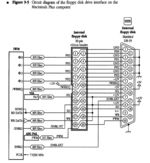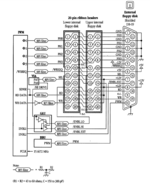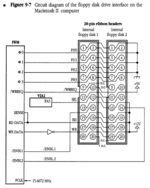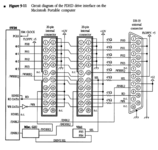Hmm. How many machines without a floppy port have two internal floppies? On single-floppy systems (say, a Q700), I’d assume that the /ENBL2 pin still exists, unused, on the SWIM chip. If you could tap into that, it would let you add a second floppy. Still no guarantee that ROM support for the extra floppy exists, but support for /ENBL2 seems more likely than that extra VIA bit.
Assuming the VIA bit and ROM issues are addressed, the Macintosh II, IIx, IIfx, and LC all have dual floppy and no external. The IIcx, IIci, IIsi, and SE/30 all have one internal and one external, and they're likely on /ENBL1 and /ENBL2, respectively. I don't recall if the LC II has dual internal still, or if they gave one up.
ROM support could be added via BMOW ROM and Plus ROM if it were possible to hack in support from the SE ROM. Theoretically also with the LC ROMs since they're already socketed.
I'm writing this like it's easy, but I know it's not. I'm ignorant of programming and reverse engineering, but I'm not ignorant to the work involved. You guys (and I mean all the hackers on here) are incredible and I'm extremely envious of your ability to do so.
In any event, I plan on heading to the surplus store this weekend to grab a couple DE19 connectors and some ribbon cable, plus some single pin connectors. I aim to make an internal-to-external cable that can be threaded through the lock slot. I found out our laser cutter is only 75w (probably close to 70w because it's an older, used unit), and I don't think it's strong enough to cut through 1/16" aluminum. So I don't think I'll be able to make a custom NuBus bracket. I'll find out when the technician gets here to set it up. We're waiting on maintenance to set up a 240v circuit.




